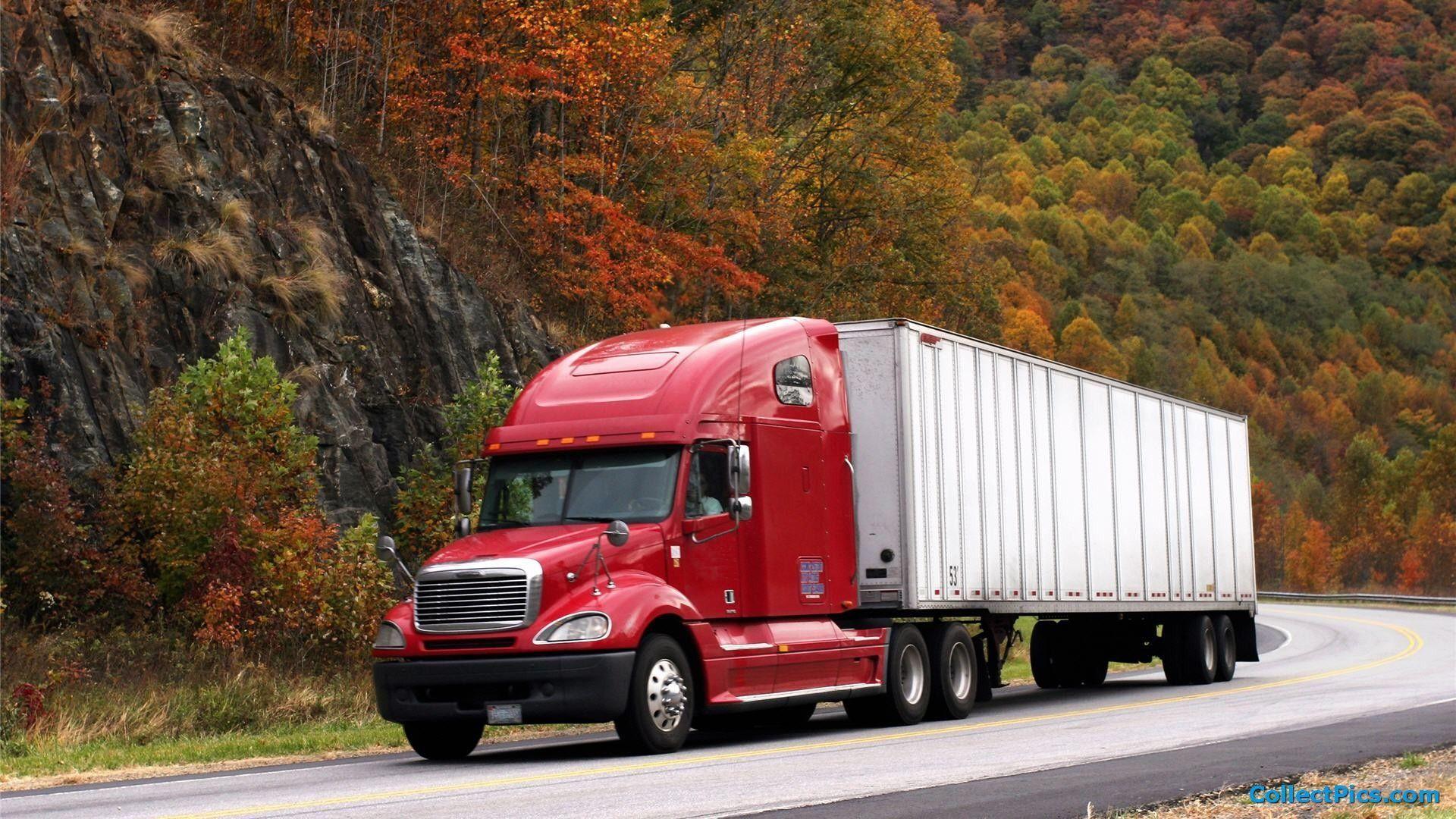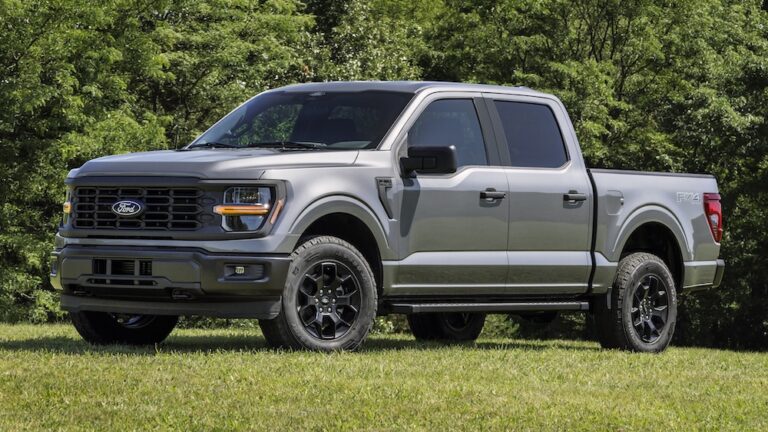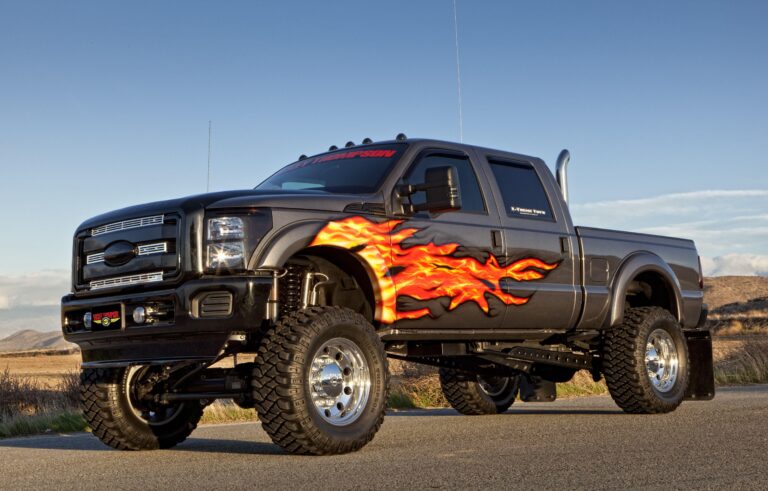Semi Truck Part Names: A Comprehensive Guide to the Anatomy of the Road’s Giants
Semi Truck Part Names: A Comprehensive Guide to the Anatomy of the Road’s Giants cars.truckstrend.com
The roar of a diesel engine, the glint of chrome, and the sheer scale of a semi-truck are iconic symbols of modern commerce. These behemoths of the highway, essential for transporting goods across vast distances, are complex machines comprised of thousands of individual components working in intricate harmony. For drivers, mechanics, fleet managers, or even curious onlookers, understanding the myriad of semi-truck part names is not merely an academic exercise; it’s crucial for safety, efficient operation, maintenance, and effective communication.
This comprehensive guide will delve into the anatomy of a semi-truck, breaking down its various systems and naming the key parts that make these road warriors tick. From the powerhouse engine to the sophisticated braking systems, we’ll explore the nomenclature that defines these incredible machines, offering practical insights and demystifying the jargon of the trucking world.
Semi Truck Part Names: A Comprehensive Guide to the Anatomy of the Road’s Giants
The Powerhouse: Engine and Drivetrain Components
At the heart of every semi-truck lies its power generation and delivery system. These components are responsible for converting fuel into motion, propelling the truck and its heavy cargo.
- Engine: Typically a large, powerful diesel engine, the engine is the primary source of power. Modern semi-truck engines are highly sophisticated, featuring electronic controls, advanced fuel injection systems, and emissions reduction technologies.
- Turbocharger: A forced induction device that uses exhaust gases to spin a turbine, which in turn compresses intake air, forcing more air into the engine cylinders for increased power and efficiency.
- Exhaust System: More than just a pipe, this system includes the exhaust manifold, turbocharger, muffler, and increasingly complex emissions control devices like the Diesel Particulate Filter (DPF) and Selective Catalytic Reduction (SCR) system, which uses Diesel Exhaust Fluid (DEF) to reduce nitrogen oxide emissions.
- Transmission: Responsible for transferring power from the engine to the drive wheels and allowing the driver to select different gear ratios. Semi-trucks commonly use manual transmissions (8, 9, 10, 13, 15, or 18 speeds) or Automated Manual Transmissions (AMTs), which combine the efficiency of a manual with the convenience of an automatic.
- Driveshaft (Propeller Shaft): A rotating shaft that transmits power from the transmission to the differential(s) on the drive axles.
- Axles: These are shafts on which the wheels are mounted. Semi-trucks have multiple axles:
- Steer Axle (Front Axle): The single axle at the front that is used for steering.
- Drive Axles (Rear Axles): Typically a tandem set (two axles) at the rear that receive power from the engine and propel the truck.
- Tag Axle/Pusher Axle: Additional non-powered axles that can be lifted or lowered to distribute weight, often seen on vocational trucks.

- Differential: A gear assembly located on the drive axles that allows the wheels on the same axle to rotate at different speeds, which is crucial for turning corners.

The Foundation: Chassis and Frame Parts
The chassis is the backbone of the semi-truck, providing the structural integrity to support the engine, cab, and cargo.
![]()
- Frame Rails: The two long, parallel beams that run the length of the truck, forming the main structure of the chassis.
- Crossmembers: Shorter beams that connect the two frame rails, adding rigidity and supporting various components.
- Suspension System: Designed to absorb shocks and vibrations from the road, providing a smoother ride and protecting the cargo. Common types include:
- Leaf Spring Suspension: Uses stacked steel leaves.
- Air Ride Suspension: Uses air bags (air springs) inflated by an air compressor, offering a superior ride and adjustability.
- Shock Absorbers: Dampen the oscillations of the springs.
- Steering Components:
- Steering Box (Gearbox): Converts the rotational motion of the steering wheel into linear motion to turn the wheels.
- Power Steering Pump: Provides hydraulic pressure to assist the steering effort.
- Tie Rods & Drag Link: Rods that connect the steering box to the wheels, transmitting the steering input.
- Fifth Wheel: The large, horseshoe-shaped coupling device mounted on the truck’s frame, designed to connect and lock securely with the kingpin of a semi-trailer.
- Landing Gear: Retractable legs located on the front of a semi-trailer, used to support the trailer when it’s detached from the truck.
Safety and Control: Braking and Electrical Systems
Safety is paramount in trucking, and a robust braking system along with reliable electrical components are critical for safe operation.
- Air Brake System: Semi-trucks use air brakes, which are highly effective for heavy loads. Key components include:
- Air Compressor: Generates compressed air for the braking system and other air-powered accessories.
- Air Tanks (Reservoirs): Store compressed air.
- Brake Chambers: Use air pressure to apply force to the slack adjusters.
- Slack Adjusters: Automatically or manually adjust the brake shoes/pads to compensate for wear.
- Brake Shoes/Pads: Friction material that presses against the brake drums/rotors to slow or stop the vehicle.
- Brake Drums/Rotors: The rotating components that the brake shoes/pads press against.
- Glad Hands: Couplings used to connect the air lines from the truck to the trailer’s air brake system.
- Anti-lock Braking System (ABS): An electronic system that prevents the wheels from locking up during braking, maintaining steering control.
- Lighting System: Essential for visibility and safety. Includes:
- Headlights: For forward illumination.
- Tail Lights: Rear illumination.
- Brake Lights: Indicate braking.
- Turn Signals: Indicate turns.
- Marker Lights & Clearance Lights: Small lights along the sides and top of the truck and trailer to indicate their overall length and width, especially at night.
- Battery Box: Houses the truck’s batteries, providing electrical power for starting and accessories.
- Alternator: Charges the batteries and powers the electrical system while the engine is running.
- Wiring Harnesses: Bundles of electrical wires that transmit power and signals throughout the truck.
The Cab and Comfort: Interior and Exterior Elements
The cab is the driver’s office and often their home on the road, designed for functionality, safety, and comfort.
- Cab: The enclosed compartment where the driver sits. Can be a Day Cab (no sleeping area) or a Sleeper Cab (with a bunk for resting).
- Dashboard/Instrument Panel: Contains gauges, warning lights, and controls for various truck systems.
- Seats: Often air-ride seats, providing suspension and adjustability for driver comfort.
- Mirrors: Large side mirrors, often with convex (fish-eye) sections, to provide a wide field of view.
- Fenders: Components that cover the wheels, protecting the truck and other vehicles from debris.
- Fuel Tanks: Large tanks, usually two, mounted on the sides of the chassis, for diesel fuel.
- Aerodynamic Components:
- Fairings: Shaped panels mounted on the cab and chassis to reduce air resistance.
- Side Skirts: Panels mounted along the sides of the chassis and trailer to smooth airflow underneath the vehicle.
Trailer-Specific Components (Brief Overview)
While the focus is on the truck, it’s essential to briefly mention key trailer parts that interact directly with the truck.
- Kingpin: A large, steel pin extending from the underside of the trailer’s front, which locks into the fifth wheel of the tractor.
- Landing Gear: Retractable legs that support the trailer when it’s unhitched from the tractor.
- Trailer Axles: Typically two or three axles on the trailer, supporting the cargo.
- Trailer Brakes: Operated by the truck’s air brake system, similar components to the truck’s brakes.
- Glad Hands: Air line connections on the trailer, matching those on the truck.
- Electrical Connection (7-Way Plug): Provides power for trailer lights, ABS, and other electrical components.
Practical Advice and Actionable Insights
Understanding semi-truck part names offers significant advantages:
- Enhanced Safety: Knowing the function of each part helps drivers perform thorough pre-trip inspections, identify potential issues early, and understand warnings.
- Efficient Maintenance & Repair: Clear communication with mechanics is vital. Accurately naming a part or describing its function speeds up diagnosis and repair, saving time and money.
- Improved Troubleshooting: When something goes wrong, a basic understanding of component functions allows for more logical troubleshooting steps.
- Compliance: Many parts, especially those related to safety and emissions, are subject to strict regulations. Knowing their names and functions helps ensure compliance.
- Cost Savings: Identifying a failing part before it causes cascading damage can prevent more expensive repairs down the line.
Tips for Learning:
- Visual Aids: Use diagrams, online resources, and even walk-around videos.
- Hands-on Experience: Spend time with the truck, identifying parts in person.
- Talk to Experts: Mechanics and experienced drivers are invaluable resources.
- Focus on Systems: Learn parts within their functional systems (e.g., all braking components together).
Challenges:
- Vast Number of Parts: The sheer volume can be overwhelming initially.
- Specialized Terminology: Many terms are unique to heavy-duty vehicles.
- Technological Evolution: Newer trucks incorporate advanced electronics and systems, adding to the complexity.
Semi Truck Part Names: Estimated Price Ranges for Common Components
Please note: These prices are highly variable and serve only as estimates. Actual costs depend on the truck make/model, part manufacturer (OEM vs. aftermarket), new vs. remanufactured, labor rates, and regional market conditions. They do not include installation costs.
| Part Name | Description | Estimated Price Range (USD) | Notes |
|---|---|---|---|
| Diesel Engine | New or remanufactured, depending on size/brand | $15,000 – $40,000+ | Major component, highly variable based on engine type, HP, and emissions |
| Transmission (AMT) | Automated Manual Transmission, new or remanufactured | $6,000 – $15,000+ | Price varies significantly by brand (e.g., Eaton, Volvo, Detroit) |
| Turbocharger | New or remanufactured | $1,000 – $4,000 | Crucial for engine performance and efficiency |
| DPF (Diesel Particulate Filter) | New or remanufactured, emissions control part | $2,000 – $8,000 | High-cost emissions component, essential for modern diesels |
| Air Compressor | For air brake system and accessories | $400 – $1,500 | Vital for brake system functionality |
| Air Bag (Suspension) | Air spring for air ride suspension | $100 – $350 per bag | Often replaced in pairs or sets |
| Brake Drum | Per wheel, standard size | $100 – $300 | Replacement varies by wear, typically replaced with shoes |
| Brake Shoes (Set for one axle) | Friction material, per axle set | $150 – $400 | Typically replaced when worn or with new drums |
| Steering Box | New or remanufactured | $800 – $2,500 | Critical steering component, often rebuilt or exchanged |
| Alternator | New or remanufactured | $300 – $800 | Essential for charging battery and powering electrical system |
| Fifth Wheel | Complete assembly, new or remanufactured | $1,500 – $5,000 | Essential for coupling truck to trailer |
| Fuel Tank (100-150 gal) | Single tank, aluminum | $800 – $2,000 | Often replaced due to damage or leaks |
| Tire (Drive/Steer) | New, heavy-duty truck tire | $350 – $600 per tire | Significant ongoing operational cost, varies by brand and type |
Frequently Asked Questions (FAQ)
Q1: Why is it important to know semi-truck part names?
A1: Knowing part names is crucial for safety (pre-trip inspections), efficient maintenance and repair (clear communication with mechanics), effective troubleshooting, understanding regulatory compliance, and ultimately, ensuring the longevity and reliability of the vehicle.
Q2: Are parts interchangeable between different truck brands?
A2: Generally, no. While some generic components like certain filters, lights, or standard fasteners might be, major components like engines, transmissions, axles, and cab parts are specific to the truck manufacturer (OEM – Original Equipment Manufacturer) or designed as aftermarket replacements for specific models.
Q3: What’s the difference between OEM and aftermarket parts?
A3: OEM parts are manufactured by the original equipment manufacturer (e.g., Volvo, Freightliner, PACCAR) or their direct suppliers. Aftermarket parts are produced by other companies as replacements for OEM parts. Aftermarket parts can often be more affordable but vary in quality and warranty.
Q4: How can I learn more about specific truck parts?
A4: Excellent resources include truck manufacturer websites, parts catalogs, repair manuals, online forums, YouTube channels dedicated to trucking and mechanics, and most effectively, by talking to experienced mechanics and drivers. Hands-on experience during maintenance is also invaluable.
Q5: What are the most common parts that need replacement due to wear and tear?
A5: Common wear items include tires, brakes (pads, shoes, drums), filters (oil, fuel, air), belts, hoses, suspension components (air bags, shock absorbers, bushings), and various electrical components like lights and sensors. DPFs and other emissions components can also require frequent maintenance or replacement.
Conclusion
The semi-truck is a marvel of engineering, a complex tapestry of components meticulously designed to withstand the rigors of the open road. Understanding the names and functions of its myriad parts is an empowering skill. It transforms a daunting machine into a comprehensible system, allowing for better maintenance, safer operation, and more informed decision-making. Whether you’re a professional driver navigating the nation’s highways, a mechanic ensuring these giants stay roadworthy, or simply an enthusiast, a comprehensive grasp of semi-truck part names is your key to unlocking the secrets of these essential vehicles. By continuously learning and respecting the intricate anatomy of the semi-truck, we contribute to safer roads, more efficient logistics, and the continued flow of commerce that keeps our world moving.




